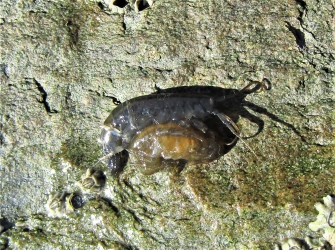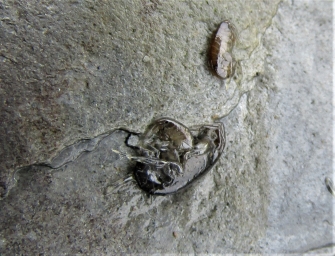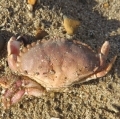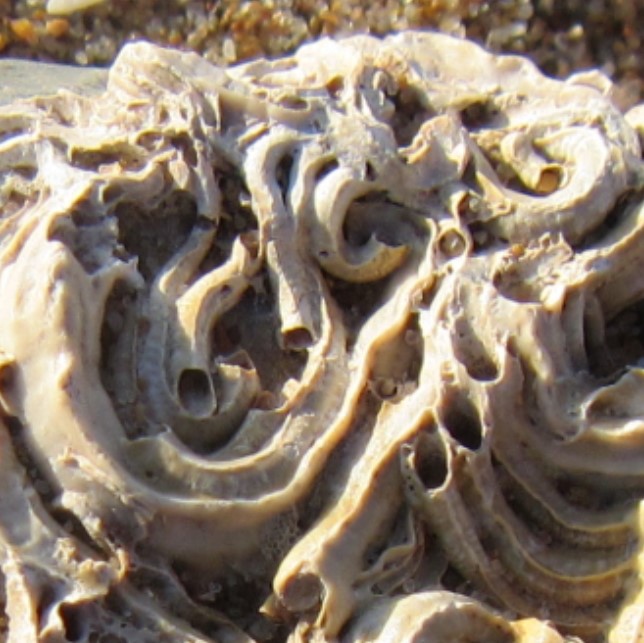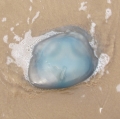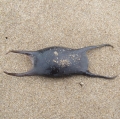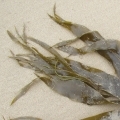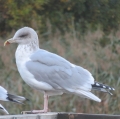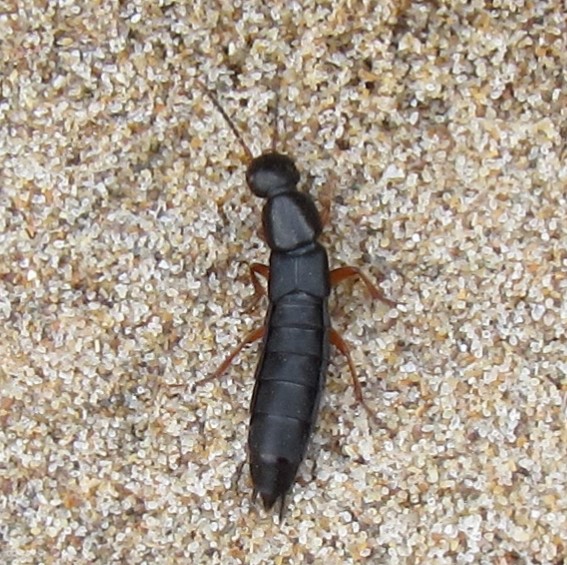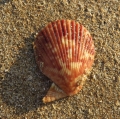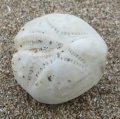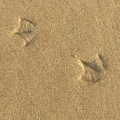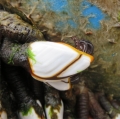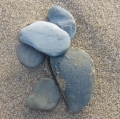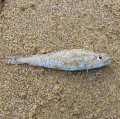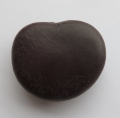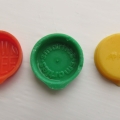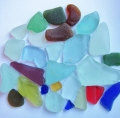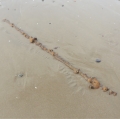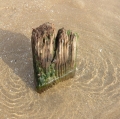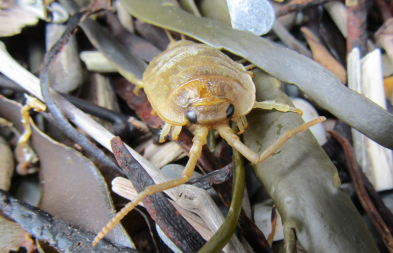

Slaters and isopods
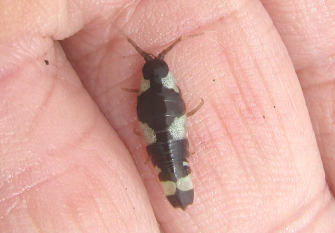
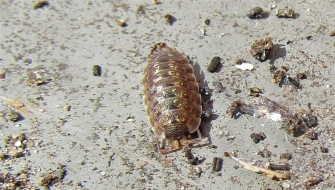
Above: The Common Shiny Woodlice, Oniscus asellus, a firm fan of terra firma.
Woodlice, or chiggy pigs as they are known down here, are crustaceans, as are crabs and barnacles, and shrimps.
A few crustaceans are found on land such some crabs in exotic parts and, most notably, woodlice. But the vast majority of crustaceans are marine animals.
Woodlice are, in fact, in a group of animals called isopods and many isopods are marine animals. The one species of isopod which most resembles the woodlouse is the sea slater. It looks so muych like a woodlice that people oftern mistake one for the other even though the sea slater lives in rockpools and is, in fact, a fast swimmer.
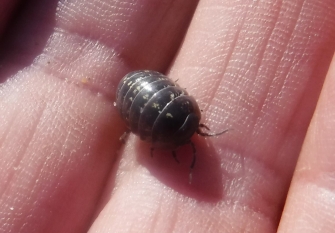
Above, the land-living pill woodlouse which can curl up into a ball when threatened - Armadillidium vulgare. The closest it gets to the sea is sand dunes
;
Sea slaters
Ligia oceanica
Sea slaters are one of the largest isopods found. They live in crcks and crevices in and around rockpools and harbour walls. They are surprisingly common but not always easy to see as they are largely nocturnal.
They feed on dead sea weeds and other plant and animal matter.
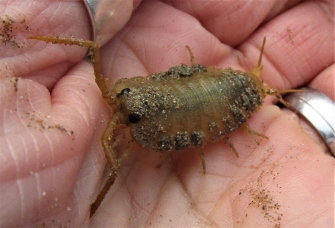
;
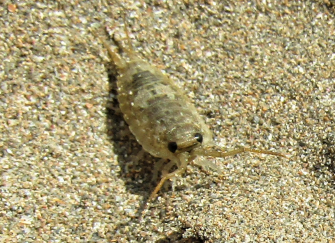
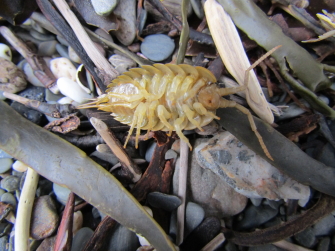
Isopods
Aside from the sea slaters, there are many other species of isopods that can be found in and around rockpools, on the rocky shore and in the open sea.
Like the sea slaters (and woodlice), isopods typically have bodies which are flattened low to the ground - like woodlice - which differentiates them from the amphipods below which also have flattened bodies - but they flattened vertically meaning that they are tall, and narrow.
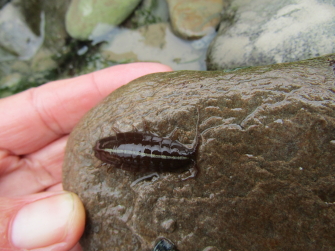

Idotea sp.
Above and below are are Idotea isopods. They are relatively large (larger than most woodlice) and are oval-shaped like these examples. Although they are seen in many different colours and patterns, these are not useful for differentiating the different species.
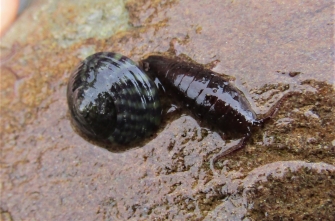
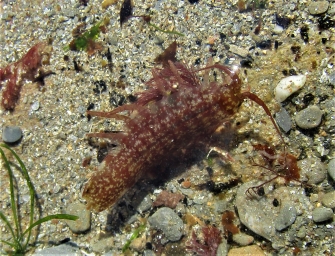

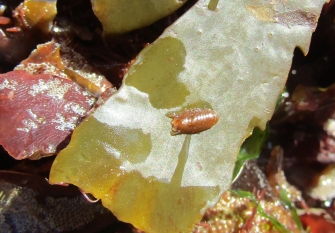
Above is the relatively squat-bodied Sphaeroma serratum.
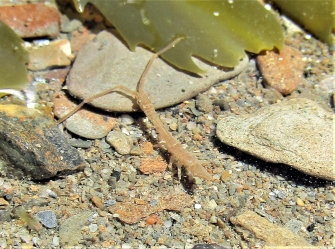
Isopods come in a range of shapes and colours. This very small, very thin, isopod is a Astacilla longicornis.
It can be seen darting around at great speed in the clip below.
Amphipods
On many a sandy beach, there will be small jumping creatures - these are amphipods known as sand hoppers - Talitrus saltator.
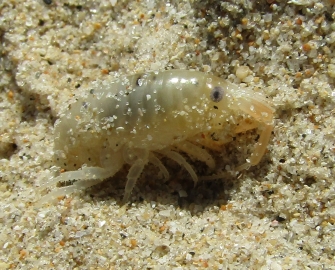
The narrowness of amphipods means that when we see them, often under rocks, they are on their sides - as below.
When they try to move, they shuffle and jerk in this position, generally gettingour of our way very quickly despite lying down!
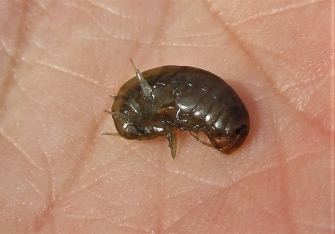
Gammerus locusta
While it is not always easy to tell one species of amphipod from another, those pictured above and below have a distinguishing feature. Their eyes, both on the right side of the animal in thiese cases, are oval in shape, whereas many other of the more comon species have round eyes.
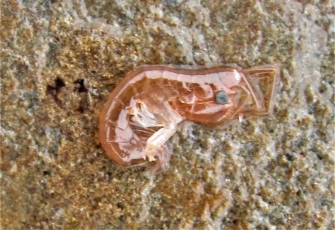
Amphipods are often seen mating, as below.
